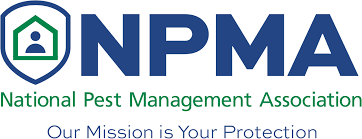As a property manager or hospitality professional, the discovery of a bedbug infestation can be a distressing and challenging situation to address promptly. Bedbugs are notorious for their resilience and ability to hide in various nooks and crannies, making their eradication a complex task. When it comes to combating these persistent pests, two primary methods are often employed: heat treatment and chemical treatment. In this blog, we will delve into the effectiveness of each method, considering the unique needs of property managers and the hospitality industry.
Heat Treatment: An In-Depth Analysis:
Heat treatment, also known as thermal remediation, has gained popularity as an eco-friendly alternative to chemical treatments. This method involves raising the temperature of the infested area to a lethal level for bedbugs, typically between 120°F and 140°F (48°C and 60°C). The sustained heat exposure targets all life stages of bedbugs, including eggs, nymphs, and adults.
Benefits of Heat Treatment:
- Comprehensive eradication: Heat treatment can penetrate deep into furniture, mattresses, and wall cavities, effectively reaching bedbugs hiding in hard-to-reach areas.
- Non-toxic and eco-friendly: Heat treatment does not involve the use of harmful chemicals, reducing the potential risks associated with pesticide exposure.
- Immediate results: Heat treatment can typically eliminate bedbug infestations in a single treatment, minimizing downtime and disruption to property operations.
- Prevents resistance: Unlike chemical treatments, which may lead to resistance in bedbug populations over time, heat treatment remains consistently effective.
- Minimal preparation: Compared to chemical treatments, heat treatment requires minimal preparation, eliminating the need to remove or bag belongings.
Chemical Treatment: An In-Depth Analysis:
Chemical treatment for bedbug control involves the use of insecticides, either in liquid, dust, or aerosol form. These insecticides target bedbugs directly or disrupt their life cycle, effectively eliminating the infestation.
Benefits of Chemical Treatment:
- Versatility: Chemical treatments offer a range of options, including residual sprays, insecticide dusts, and aerosols, allowing targeted applications to infested areas.
- Long-lasting effects: Certain chemical treatments have residual properties, providing extended protection against future infestations.
- Flexibility: Chemical treatments can be applied in various settings, including hotels, apartments, and residential properties, making them a viable option for property managers with diverse portfolios.
- Cost-effectiveness: In some cases, chemical treatments may be more cost-effective, especially for smaller infestations or tight budget constraints.
- Professional expertise: Chemical treatments often require the expertise of licensed professionals, who can provide accurate assessments and customized solutions tailored to specific infestation scenarios.
Conclusion:
Both heat treatment and chemical treatment offer viable approaches to bedbug control. However, understanding the unique advantages and limitations of each method is crucial for property managers and the hospitality industry.
Heat treatment provides a comprehensive and eco-friendly solution, delivering immediate results without the potential risks associated with chemical exposure. It can be particularly beneficial in large-scale operations or environments where guest safety and environmental concerns are paramount.
Chemical treatment, on the other hand, offers versatility, long-lasting effects, and the expertise of professionals who can develop targeted strategies. It may be a suitable choice for smaller-scale operations or situations where cost-effectiveness is a significant factor.
Ultimately, the choice between heat treatment and chemical treatment should be based on a careful evaluation of the specific needs, budgetary considerations, and unique circumstances of each property. Consulting with a professional pest control provider is essential to determine the most effective and appropriate approach for successful bedbug eradication.
References:
- Potrikus, C. J., & Campbell, B. E. (2017). Treatment of bed bug infestations using heat. Insects, 8(1), 35. doi: 10.3390/insects8010035
- Wang, C., & Cooper, R. (2018). Bedbug revolution: Chronological evolution of resistance. Insects, 9(2), 68. doi: 10.3390/insects9020068
- Harlan, H. J., & Faulde, M. K. (2017). Bedbugs. In M. K. Rust & S. H. Owens (Eds.), Pest Control Technology Handbook (pp. 263-290). GIE Media, Inc.
- Potter, M. F. (2011). The history of bed bug management – With lessons from the past. American Entomologist, 57(1), 14-25. doi: 10.1093/ae/57.1.14








